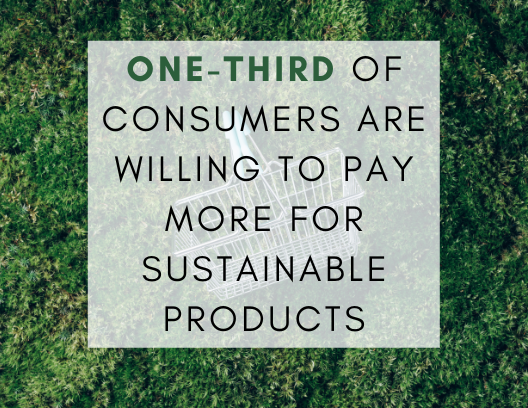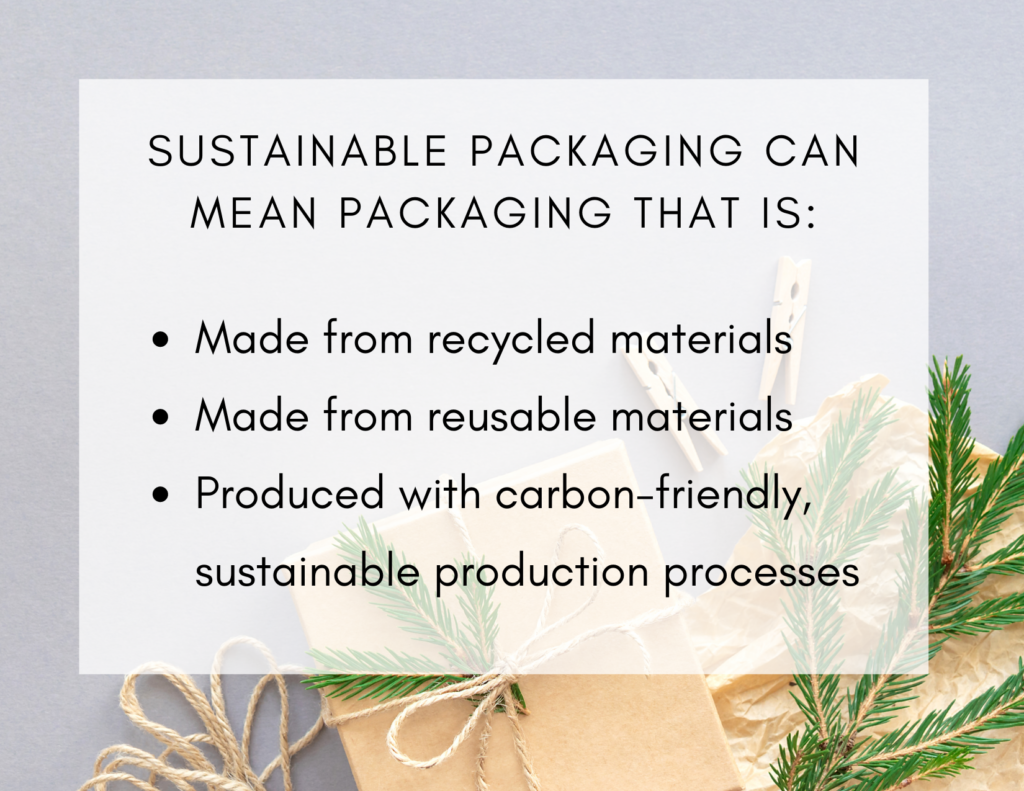As more and more consumers are pushing businesses to become environmentally sustainable, many are looking at packaging as a way to reduce waste and emissions.
Plastic packaging has been the norm for many decades due to it being inexpensive, hygienic, and easily accessible. However, with 34.5 million tons of plastic generated each year, the adverse effects of plastic packaging far outweigh its uses, and it’s time to move on to something more sustainable.
Switching over to sustainable packaging may seem like a daunting and expensive business endeavor, but as the market shifts to a greener focus, sustainable packaging can generate higher revenues and savings for businesses with minimal investment.
A Changing Market

The global market is quickly becoming environmentally focused, with more consumers changing their buying habits to support sustainable companies. A recent study found that one-third of consumers are willing to pay up to 25% more on products and services that promise sustainability, and over 42% of the global market has altered their purchasing decisions in some way to be more sustainable.
Currently, the majority of packaging material is designed as single-use and made with non-recycled material. As a result, millions of tons of plastic waste fill landfills every year, with significant portions making their way into oceans and waterways. In addition, plastic production is a major contributor to global carbon emissions, with plastic production estimated to account for 20% of all oil consumption by 2050, if no changes are made to our plastic consumption habits.
This rise in environmental degradation from plastic pollution pushes the growing demand for eco-driven products and sustainable packaging. As consumers drive the market towards eco-consciousness, companies that significantly improve their sustainability efforts will have a major advantage over companies that don’t.
Shifting to Sustainable Packaging
As companies are pushed to make sustainable alternatives, packaging should be one of the first and foremost areas of interest. Not only does plastic packaging have a significant impact on the environment, but it’s the first thing consumers see when shopping. Sustainable packaging can come in several different forms, including:
- Reduced production processes to minimize supply chain impacts
- Recycled material made from 100% recycled or raw materials
- Reusable material that extends the product’s usability and promotes circular economies in packaging
Look into your company’s supply chain to find areas of improvement regarding packaging. Your business may be improved by a more sustainable packaging supplier that uses renewable resources, limited shipping and distribution, or minimized materials.

Evaluating your company’s supply chain can have significant impacts not only on improving your sustainability efforts, but on improving business practices as well. Reports indicate that, in most cases, the majority of a company’s environmental impacts stem from their supply chains. By opening up deeper communications with packaging manufacturers, companies can gain a better understanding of their supply chains and can begin to figure out the appropriate steps needed to make their business practices more sustainable. Additionally, companies report gaining better business practices and higher revenue after improving their supply chain transparency.
As companies reevaluate their packaging, audits and certifications can be a major contributor to greener practices. Look into certification such as the GLOBALG.A.P. certification, the Forest Stewardship Council Management Certification, or the Global Organic Textile Standard (GOTS) Certification in order to ensure your packaging processes are environmentally and socially responsible. In addition, the Sustainable Packaging Coalition provides clear and diverse sustainability options in packaging for companies to find the best packaging options for their market.
Sustainable packaging is a significant and efficient way for companies to reduce their environmental impacts. As markets shift towards eco-friendliness and sustainable alternatives, sustainable packaging becomes more readily available for companies to implement. In doing so, businesses can substantially improve their marketability to reach the growing number of eco-conscious consumers.
The post Boxing Out the Competition: How Green Packaging Helps Businesses first appeared on U.S. Green Chamber of Commerce.
